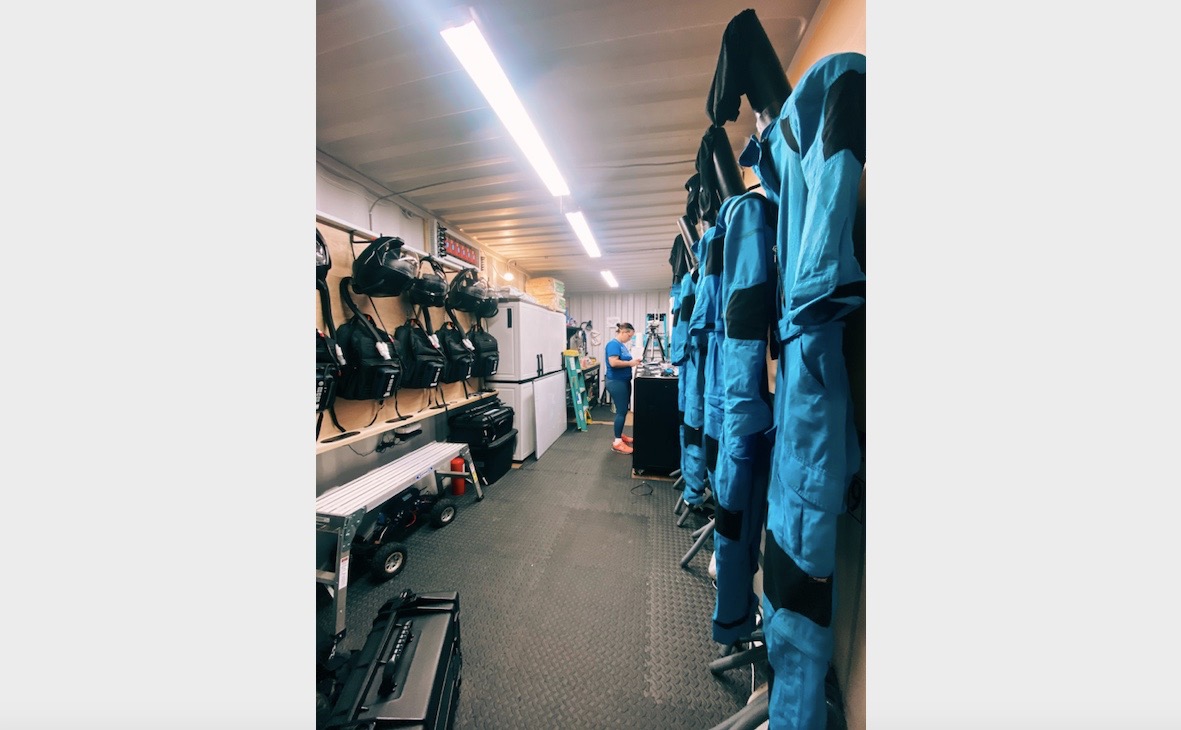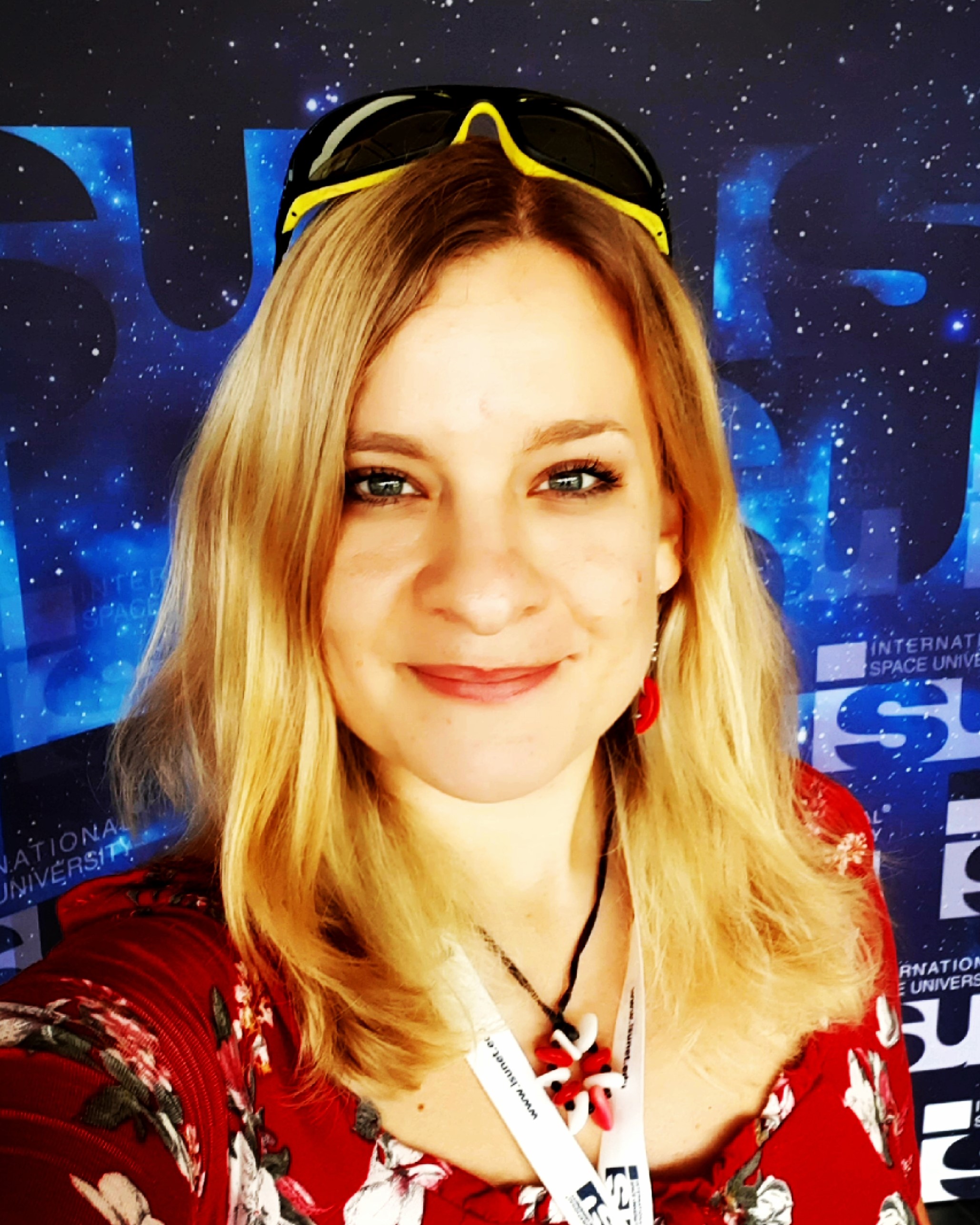A 'rogue asteroid field' almost delays the Valoria 3 analog Mars mission — Commander's Report: sol 2
The Valoria 3 crew almost didn't make it to 'Mars' at HI-SEAS because of a 'rogue asteroid field' — aka a wildfire in Hawaii.

Dr. Michaela Musilova is the director of Hawaii Space Exploration Analog and Simulation (HI-SEAS) program, which conducts analog missions to the moon and Mars for scientific research at a habitat on the volcano Mauna Loa. Currently, she is in command of the two-week Valoria 3 Martian mission and contributed this report to Space.com's Expert Voices: Op-Ed & Insights.
Commander's report for the Valoria 3 Martian mission at HI-SEAS
Sol 2 (Aug. 14, 2021)
My return to Mars was a bit rough this time. I mean my return to our analog Martian world that we live in at the HI-SEAS research station in Hawaii, where we conduct simulated missions to the moon and Mars. I have been the commander of approximately 30 analog lunar and Martian missions, so HI-SEAS is a home away from home for me, in a way. Yesterday, I brought a new crew to the Martian habitat, Valoria 3, but our journey here was almost worthy of a real mission to Mars.
At first, we had to delay our "launch to Mars" because of an unexpected late delivery of some of our mission supplies. While we were taking care of that matter, we found out that our flight plan to Mars would involve a "rogue asteroid field" (aka a wildfire that had just started on a highway on the Big Island of Hawaii, which was on the way to HI-SEAS). I had to make backup plans in case our journey to Mars may need to be postponed. After further research, it turned out that we may be able to navigate through the asteroids by using a detour.
Related: How living on Mars could challenge colonists (infographic)
The whole crew held their breath throughout our launch to Mars. We didn't know if we would make it to our destination safely. Obstacles in our way could have forced us to return to Earth and try again the next day. As the commander and "pilot" of our "spaceship to Mars," I did not want to risk the safety of my crew. We were all on the edge of our seats as we passed very close to the rogue asteroids. Fortunately, we were able to find a safe path and we made it to Mars without any issues.
Breaking space news, the latest updates on rocket launches, skywatching events and more!
Now that I'm back in my Martian home, a mixture of feelings is hitting me. On one hand, I'm happy to be back in our dome sweet dome, and I'm excited to start the Valoria 3 mission with my new crew. On the other hand, I'm also feeling something like PTSD knowing what challenges lie ahead of our time on Mars. It's not the Martian dust storms (rain storms in Hawaii) or low power modes that bother me, though they always make our life more difficult. That's when we have to live with the bare minimum in terms of electricity and heating, since our solar panels only provide very limited power during stormy weather.

I think that my main concern is with our so-called "helmet neck" issues. That is a literal pain in the neck that we experience when wearing our analog spacesuits for long periods of time during our Marswalks. I don't even know how many simulated space walks I have been on at this point — several hundreds or even over 1,000? That sadly has left a mark on my body. As much as it's such a memorable experience to do a spacewalk, I've partially lost my enthusiasm for them because of these pains that I experience.
Nevertheless, I have learned to put those feelings aside and to focus on the present — my Valoria 3 mission. My role as the commander of this mission is in great part to train my crew to adapt well to their new Martian life, perform all of their research experiments to the best possible degree and, most importantly, for us to get along. The challenges that we faced before our mission even started have actually brought us closer together. I have no doubt that we'll bond even more during this out-of-this-world experience (please excuse the pun).
Related: 'Chestbursters' and the dark calling of the lunar underground — Commander's report: lunar day 14

The Valoria 3 is crew is very diverse and international, with space professionals from a variety of backgrounds. Our operations officer is Elisha Jhoti, who is from the UK. She's currently a third-year PhD student in the Department of Earth, Planetary & Space Sciences at UCLA, where she's following her dream of becoming an astronaut. Elisha has been a science team member of two NASA lunar missions, and she serves as the equity, diversity and inclusion chair for the NextGen Lunar Scientists & Engineers early career group. While at HI-SEAS, Elisha will be conducting ground-penetrating radar surveys to detect interesting geologic features and possibly map lava flows to see if the area is a good Martian analog.
Britaney Phillips is our engineering officer. She currently teaches high school engineering outside Nashville, Tennessee. Prior to teaching, she spent six years as an active-duty at the Malmstrom Air Force Base in Montana and three years in the Tennessee Air National Guard. Britaney's now earning a bachelor's degree in mechanical engineering on top of her other degrees, after her students have challenged her to "practice what you preach" and to go for her dreams. Britaney's dream is to work in the Payload Operation and Integration Center at NASA and ultimately to teach from space. During our mission, she will be testing a small portable hydrogen fuel cell as an educational project with her students.
Our science communication officer is Sarafina El-Badry Nance, who is an astrophysicist, science communicator, women's health advocate and author of Egyptian-American heritage. She's currently a National Science Foundation graduate research fellow at UC Berkeley, where she works on supernovae and computational cosmology. Sarafina is passionate about sharing exciting and exotic facts about our cosmos with the world. Her research at HI-SEAS will be focused on analyzing xenoliths (rock fragments in magma) using a handheld laser induced breakdown spectrometer (LIBS) to determine their elemental composition and correlate them with the supernovae she studies. Her ultimate goal is to determine which supernova is responsible for the xenolith formations at HI-SEAS on the volcano Mauna Loa.

Dr. Nils Averesch is our bioengineering officer. Originally from Germany, Nils is a researcher at Stanford University and a member of the NASA Space Technology Research Institute CUBES (the Center for Utilization of Biological Engineering in Space). He applies biotechnology through a CUBES project to the in-situ resource utilization (ISRU) paradigm: the ability to leverage Martian resources for biomanufacturing could expand the capacities of human explorers, by allowing for the production of food, pharmaceuticals and other materials on Mars. At HI-SEAS, Nils will deploy synthetic biology to create microbial cell factories or bioreactors that can convert greenhouse gases, like carbon dioxide and methane, into high-performance bioplastics. This technology not only contributes to plans for ISRU on Mars but could also spawn a sustainable, circular economy on Earth.
As for me, my name is Dr. Michaela Musilova. I'm an astrobiologist and the commander of Valoria 3, as well as the director of HI-SEAS. My personal research projects focus on studying life in extreme environments (extremophiles) that live in lava caves near HI-SEAS. We have been studying these extremophiles with numerous research groups, including my collaborators at NASA's Goddard Space Flight Center in Maryland and at Honeybee Robotics, to understand if similar organisms could survive on Mars today or lived there in the past. During this mission, I will also be collaborating with the University of Westminster to study how quickly humans can contaminate a pristine environment, such as the one around HI-SEAS. This is valuable for planetary protection studies of the human contamination of other planetary bodies. Furthermore, I'll be performing several education and outreach projects with schools around the world.
Commander Musilova signing off to finish the training of the Valoria 3 crew. Our next milestone is to go on our first Marswalk and start collecting valuable data for our research projects.
Follow Michaela Musilova on Twitter @astro_Michaela. Follow us on Twitter @Spacedotcom or on Facebook.

Dr. Michaela Musilova is an astrobiologist with a focus on life in extreme environments. She has a PhD degree from the University of Bristol and is a graduate from the International Space University's (ISU) Space Studies Program. Michaela's space research experience includes working at the NASA Jet Propulsion Laboratory, University of London Observatory, Canada-France-Hawaii Telescope, on NASA's and the U.K. Space Agency's MoonLite project, being an analogue astronaut and Commander of numerous simulated missions to the moon and Mars at the HI-SEAS station in Hawaii, and at the Mars Desert Research Station in Utah. Michaela is currently the Director of HI-SEAS, as part of the International MoonBase Alliance. She is also a visiting Professor at the Slovak University of Technology, Vice-Chair of the Slovak Organisation for Space Activities, Adjunct Faculty at ISU and the Senior Research Adviser for Mission Control Space Services Inc.
She has received numerous prizes and grants, including the Emerging Space Leaders Grant from the International Astronautical Federation (2016) and the Women in Aerospace – Europe Young Professional Award (2016), and she was selected as one of the most promising 30 under 30 by Forbes Slovakia (2015). Michaela is also actively involved in the Duke of Edinburgh's International Award, as a patron of the program in Slovakia and an Emerging Leader Representative for Europe, Mediterranean and Arab states. Furthermore, she enjoys participating in STEAM outreach activities from teaching at schools, giving public presentations, to working with the media and more, as well as encouraging people to pursue their dreams. For instance, she is an Advisory Board Member of the STEM Punks immersive programs for students and teachers.
